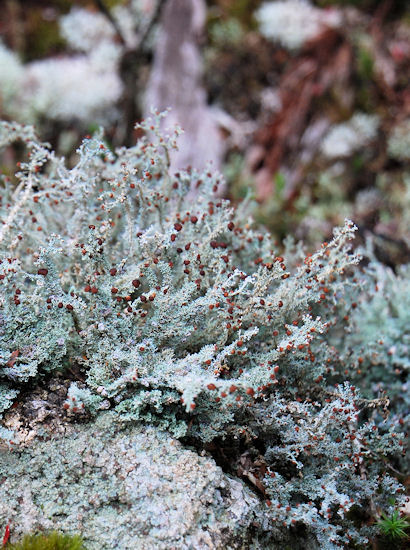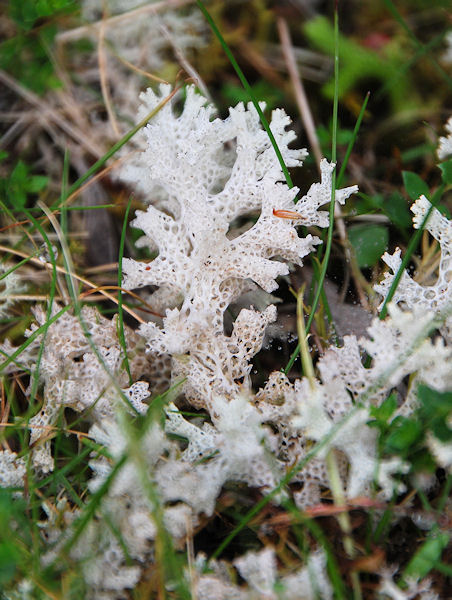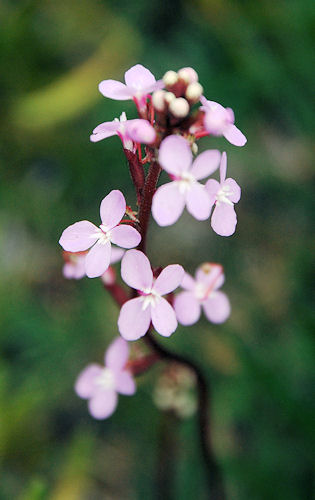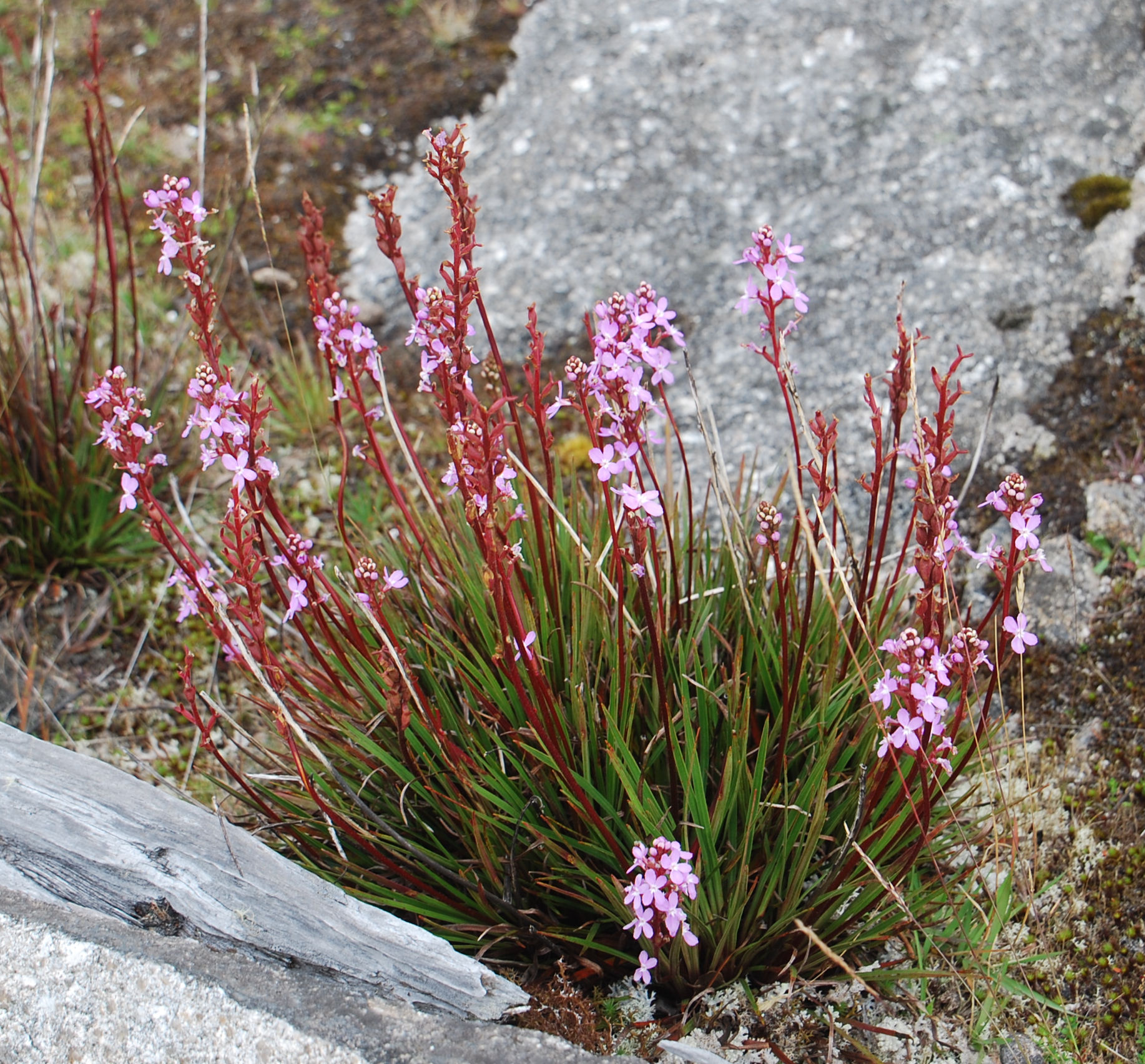At the Blue Tier
|
home
Victoria Tasmania Go west Cradle Mountain NP Cuddle the devil The enchanted myrtles At the Blue tier Holy cow! Golconda Festival Second day Narawndapu NP Wineglass Bay Fishers Point The Big Gum Hartz NP Hobart Wooden Boat Centenary party Last day General Marsupials Birds More animals Trees |
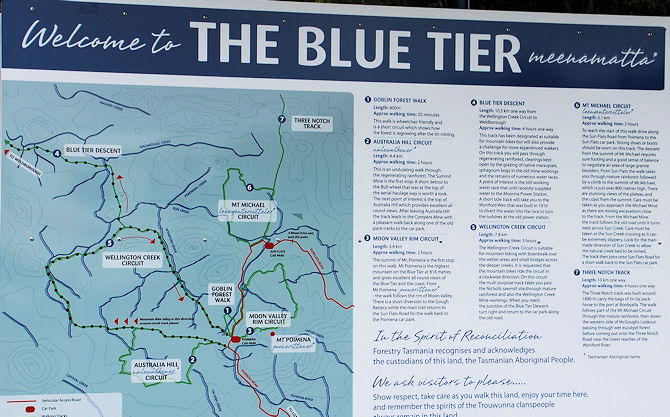 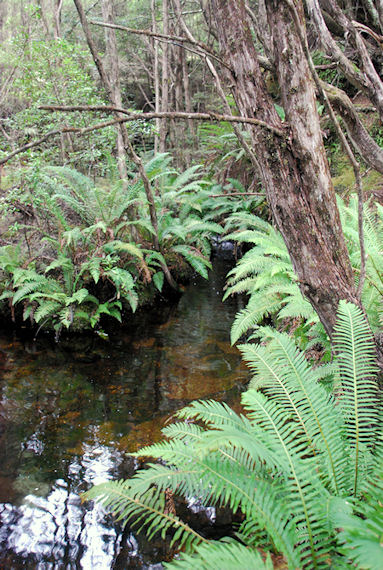
The Blue Tier is an old mining area up in the mountains of northeastern Tasmania. Only decades ago it was totally given up and now returns to nature. Having a careful look around, one does find rotting remains and channeled creeks, but in fact, we all were impressed by the difference between what we saw on the old pictures and around us. One should think the mining era was ages ago. To me, it was another dive into Gondwana flora. I never have seen such an amount of old, old-fashioned and old-looking plants and other beings before. It takes at least marsupials for suitable animals around, one may intersperse as well with some dinosaurs or dromornithids. We did not see the latter ones and few of the first, but they clearly left their marks.
What looks like a well-kept golf course is in fact totally natural. It's called a marsupial lawn. As already observed in Wilsons prom, the grasing marsupials love the freshly grown grass, not the old, hard leaves. So they keep grasing at the same spot making the perfectly natural lawn mower. We haven't seen much of the landscape maintenance crew, only some shadows in the dark - and a quoll running across the lawn. We did some short walks here, one following the marks across the lawn around the parking lot. 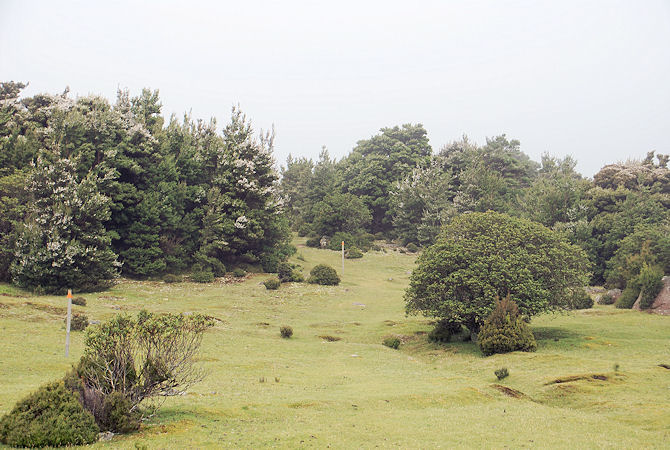 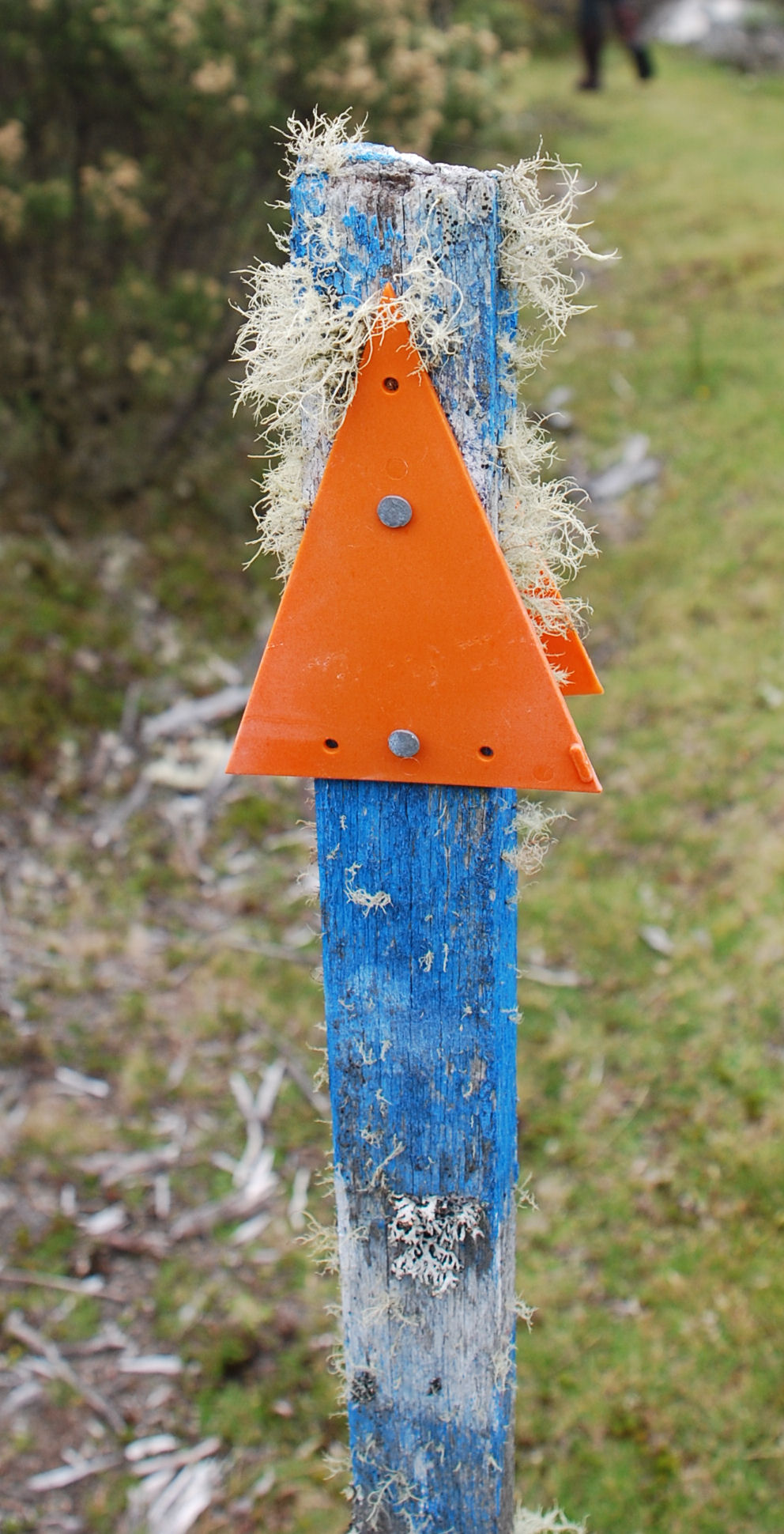
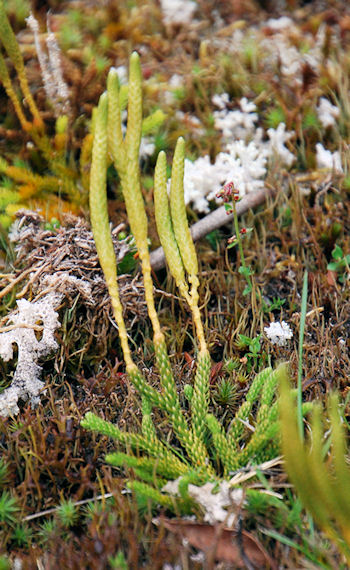
A small plant I knew from theory but have never seen before: a Lycopodium, a relative of ferns and horsetails. This is true dinosaur food. It's elder than they are and survived them for long. One feels very small eye to eye with this small, unattractive plant. But again, I found the lichens very catching. Apparently, they grow here much faster than they do on other places. And the get much taller than any liches I have seen before. On some places, they grow to finger length and sometimes look like sea sponges or cactus wood. 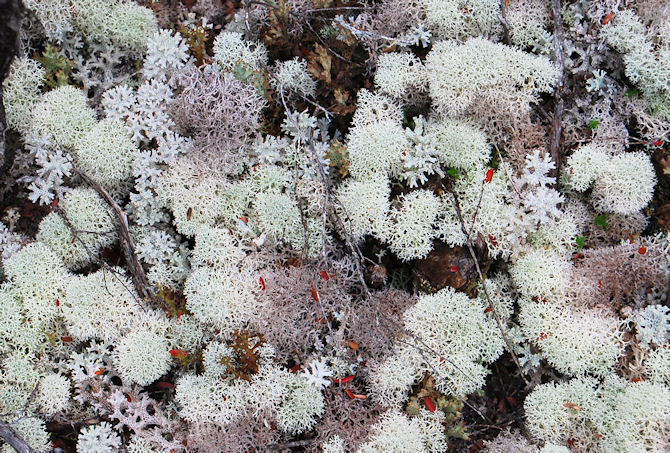
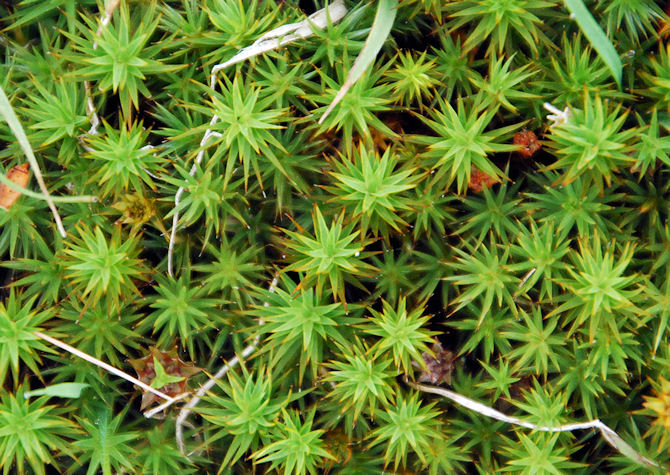 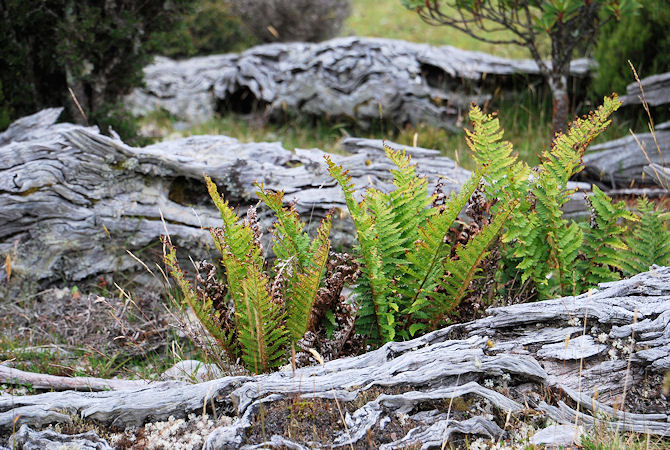 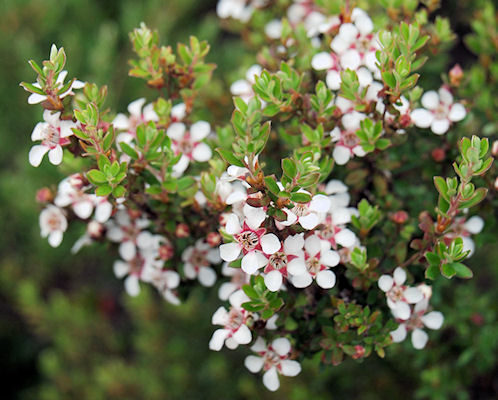 To round up the bunch of ancient survivors, one of course finds different mosses and ferns, too, but they are neither easy to tell nor very special. They are as old as the above ones, but still found pretty much everywhere. And of course, the always obvious, always beautiful Tea trees, here Leptospermum rupestre. 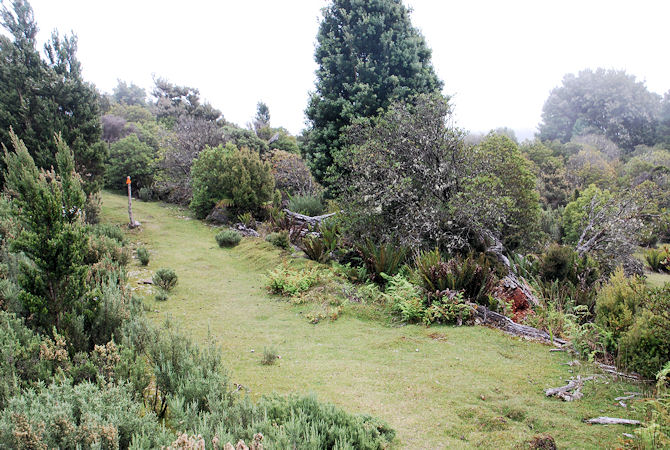
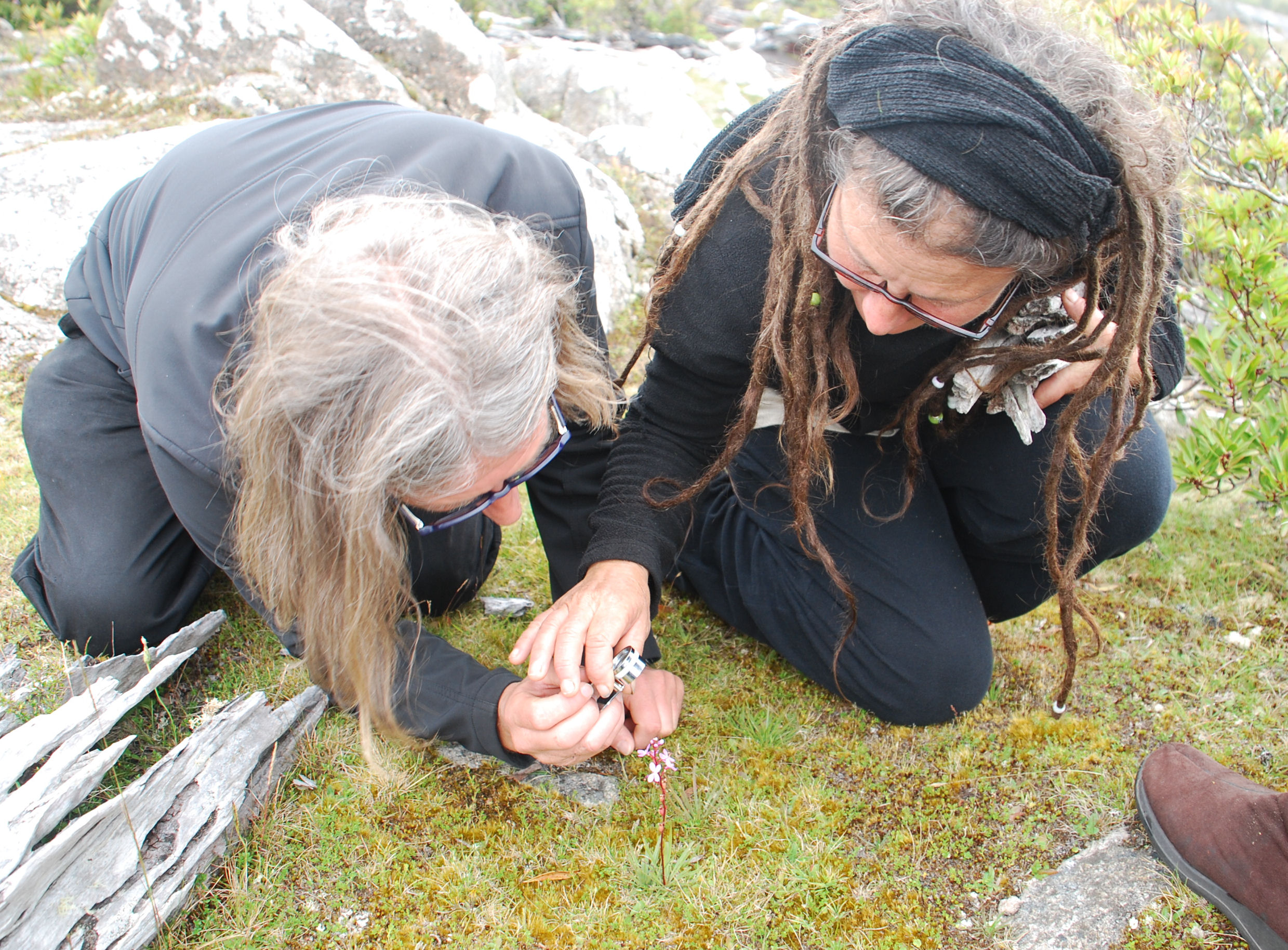 Not only here, also on several other places we found a little pink plant, the Grass triggerplant. They are not rare, but pretty special regarding their anatomy and relatives. It is suspected to be carnivorous, as it has suitable trichomes. But apparently, nobody observed the plant eating yet. Or maybe there are no surviving witnesses... 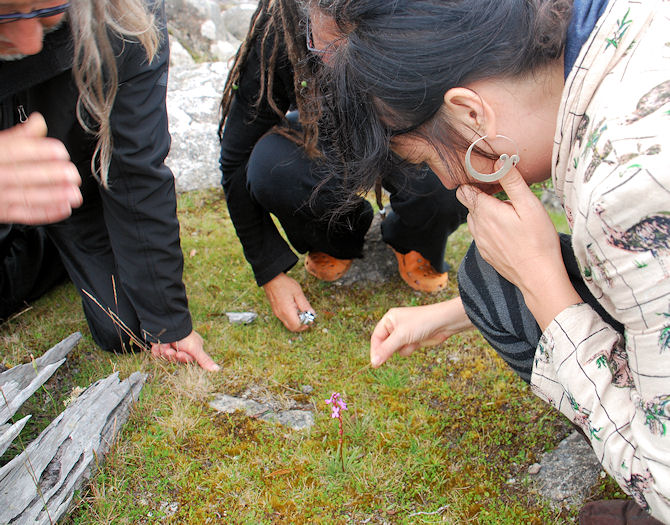
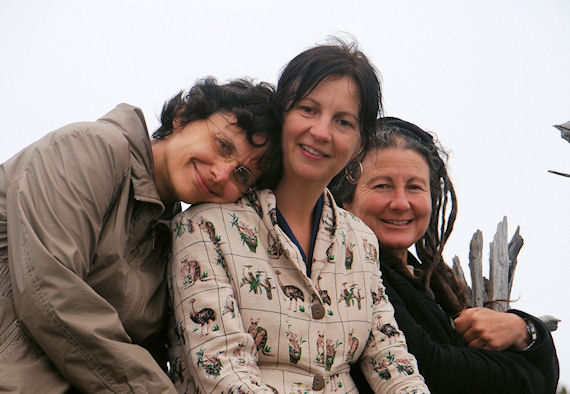 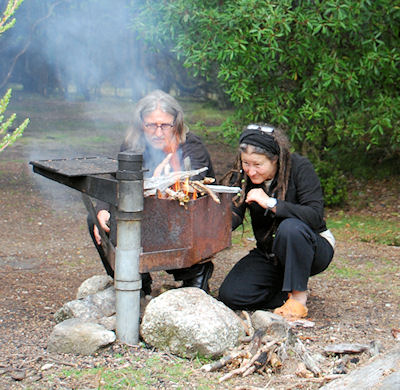 Australia is the land of barbeque. So even here, pretty far from anywhere, a facility is provided to allow open fires without endangering the protected area around. We had collected dry wood along the track, but dry on a place like this is not like dry in the rest of Australia. So Suzy and Robin had not an easy job to get the fire really going. But when they succeeded, we were really glad about the treasures we brought in from civilisation. :-D 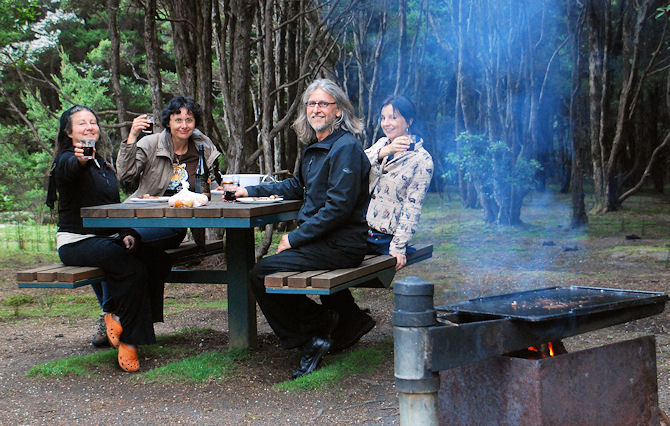 |
marsupials - birds - more animals - trees - hotels - more links - email
by IKO
